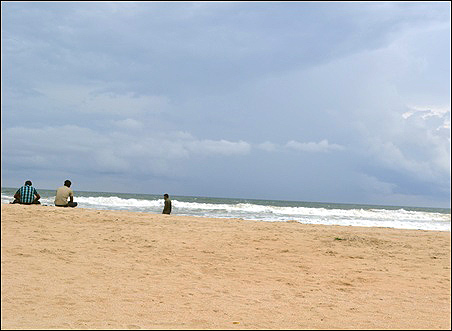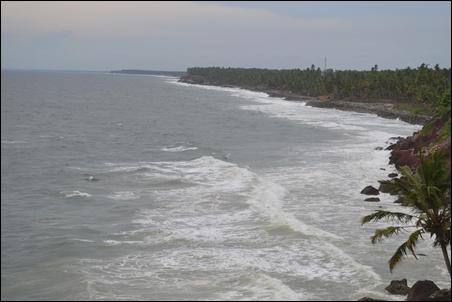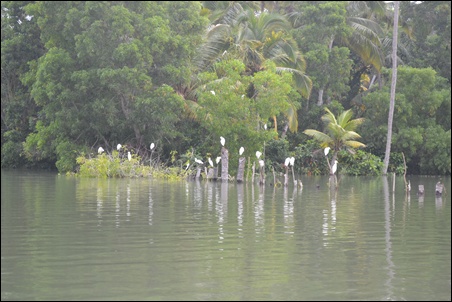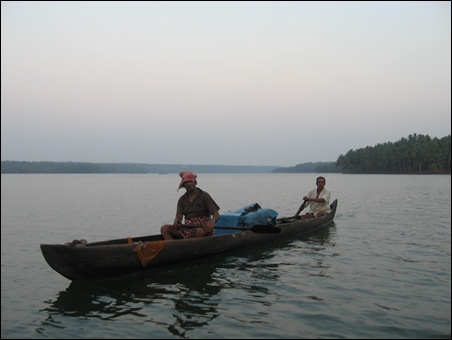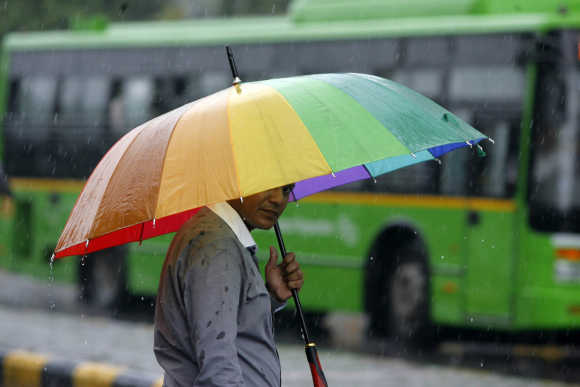 | « Back to article | Print this article |
Do we really need the meteorological department?
I rejoiced with the rest of the world when the European Organisation for Nuclear Research (CERN) almost announced the "discovery" of the elusive Higgs boson a few days ago, even though I do not understand much of the physics involved.
Why, then, do I grudge our own India Meteorological Department (IMD) its high-tech pursuit of long-term monsoon forecasts?
Simple, really. First, the Higgs boson had left its calling card for so long that its existence was not in much doubt. Second, and more important, CERN or its supporters never claimed that this research would lead to the equivalent of a more effective mousetrap.
The research for furthering our knowledge was an end in itself. The IMD, on the other hand, uses enormous resources to seek what is, at best, dubious.
Click NEXT to read more...
Do we really need the meteorological department?
And it does so in the name of helping "nation-building activities". Predicting the outcome of activities the causes of which are yet to emerge, based on associative relationships, however sophisticated, belongs largely to the realm of speculation.
And what purpose does such a forecast serve? India receives 890 millimetres (mm) of rain in the four-month long monsoon.
That is nearly 3 trillion cubic metres of water or one-and-a-half times our groundwater resources.
Click NEXT to read more...
Do we really need the meteorological department?
Most of it runs off to the sea and a large chunk of what remains evaporates. In a normal year, the rest, a small fraction of the received precipitation, is more than adequate to meet all our needs.
The crux is defining the normal. It is not the amount, but its distribution. Consider the extreme: if all the rain were to occur in one week, it would meet the average (the IMD's idea of normal) but we would have a drought of unimaginable magnitude.
At the other extreme, I must recall, even at the cost of repetition, the experience of K Rajan, one of the ablest civil servants who retired as Union secretary of agriculture in the late 1990s.
Click NEXT to read more...
Do we really need the meteorological department?
Early in his career when he was the district collector of Dhule in Maharashtra, it rained only 60 per cent of the annual average, but the district had a bumper crop and all its water bodies were brimful, because the monsoon was well distributed throughout the season.
Even the mighty Narmada valley fills up and the Sardar Sarovar reservoir overflows if there is heavy rain for just four days in the catchment area.
What farmers and water departments need is information not on how much it is going to rain in the whole monsoon but how much each week.
The season-long forecasts do not provide this crucial input. The IMD's attempts to pass off as localised five-day forecasts are at present entirely unreliable, if not misleading.
Click NEXT to read more...
Do we really need the meteorological department?
But it need not be so, given the present level of data availability and access to knowledge. The one IMD input that is completely fail-safe is the satellite image of clouds. These pictures are available at its website every hour.
A comparison of infra-red images is revealing enough to tell a reasonably intelligent observer whether and when it is likely to rain in a given area.
A tallying of the cloud patterns and the resulting actual rainfall would lead to a fairly reliable ability to forecast even the likely amount of precipitation - not the exact amount, but in a broad range of +/- 10-15 mm, which is more than adequate for the purpose of localised, short-term forecasts.
Even periods of very heavy downpour are possible to anticipate, as they are accompanied by heavy clouds (marked by thick white mass in the infra-red picture) forming into a swirling pattern or a depression in the weathermen's parlance.
Click NEXT to read more...
Do we really need the meteorological department?
International weather sites such as AccuWeather and Weather Underground provide local, five-day forecasts for most Indian cities.
For the more adventurous, the Centre for Ocean-Land-Atmosphere Studies (COLA) provides a wealth of detail, mostly understandable by interested laypeople, which could sharpen the forecasts.
My own forecasts made with this approach have mostly tallied with those provided by such sites and have been far more reliable than the IMD's shots in the dark.
The proof of the pudding, as they say, is in the eating. My waterproofing contractor swears by my forecasts to plan his work and is kind enough to say that he is now a lot more efficient.
I was also gratified to find that my forecasts for Maharashtra districts matched those of the state agriculture department under the enlightened leadership of its principal secretary (now retired).
This experience makes me bold to suggest its replication at least on a pilot basis. A carefully selected district-level agriculture officer in each district could be quickly trained to undertake such tasks and be provided with a computer and broadband connection exclusively for weather reporting and forecasting.
Click NEXT to read more...
Do we really need the meteorological department?
The short-term results would be available immediately to the district administration and updated on a 12-hourly basis. The local officials could then provide reliable guidance to the district peasantry about
rainfall and what agricultural operations to undertake, and plan logistics of supply of inputs.
The local revenue administration could provide feedback in terms of rainfall and number of rain-hours data according to various locations, which could then be consolidated and fed into the national network with virtually no time lag.
Since this work will be done by subject-matter personnel, the reliability and relevance of this data bank would be superior to what the IMD does or outsources. The tasks of state and central governments would be enormously facilitated.
Click NEXT to read more...
Do we really need the meteorological department?
No additional personnel or bureaucracy is needed for this build-up from ground realities.
The annual budget for consumables and some incentives for the staff involved would not exceed Rs 5 lakh per district, or Rs 30 crore (Rs 300 million) for all the 600 districts of the country.
This is just a tenth of recurring revenue expenditure of the IMD in 2010-11, but its effectiveness and impact, I am convinced, would be far greater than that of the entire IMD.
The 1960s radical group Students for Democratic Society had a slogan: "You don't need a weatherman to tell which way the wind blows." Paraphrasing that, you don't need the IMD to tell you how the monsoon progresses.
The writer taught at the Indian Institute of Management, Ahmedabad, and helped set up the Institute of Rural Management, Anand.

